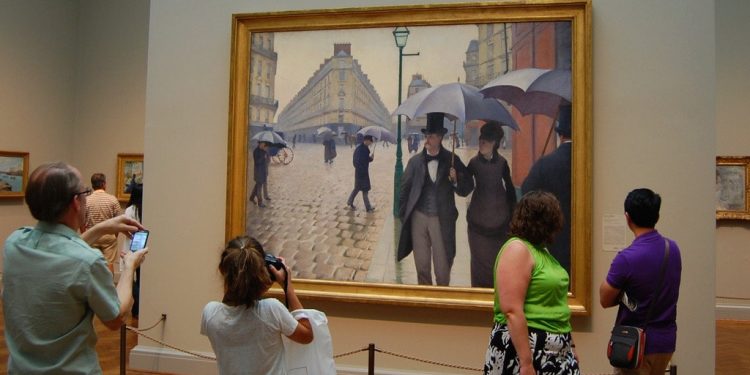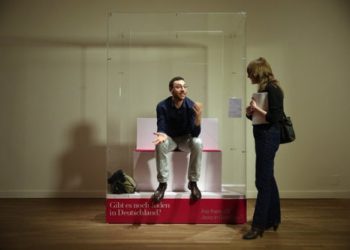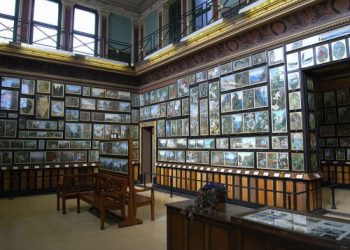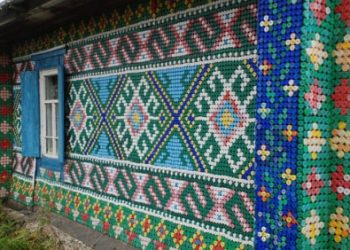Visitors looking at Gustave Caillebotte’s Paris Street; Rainy Day (1877).
The painting “shows a vast cobblestone street, stretching out in front of looming, wedge-shaped buildings. The street is dotted with dark umbrellas that shelter top-hatted men, and women in long skirts — all looking vague and a little disoriented. That was a major subject of Caillebotte’s: What the modernization of Paris was doing to its people…‘Modern life doesn’t create close relations between human beings,’ says Nicolas Sainte Fare Garnot, curator of the Jacquemart-Andre Museum. ‘You are [in] complete loneliness in these new buildings, new avenues, new boulevards. There’s something quite sad about that.’ Caillebotte’s contemporaries — Renoir, Monet, Sisley, Pissaro — also put this ‘modern’ Paris in their paintings. But theirs is a Paris peopled by happy dancers, or sociable boaters, or busy shoppers, or flag-waving parade marchers.’They just wanted to show pleasant persons or fun activities,’ Garnot says, “not the kind of loneliness that you find [in Caillebotte.]’ It’s Caillebotte’s perspectives — his wide-angled, panoramic views — that shade the paintings with sadness. The zooming angles and thrusting spaces are daring, compelling, dramatic and totally original.”
















